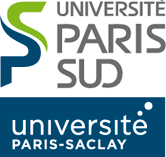Seminaires
L'équipe GALaC organise ou participe à trois séminaires réguliers.
Séminaire d'équipe GALaC
Le séminaire d'équipe de GALaC est organisé régulièrement le vendredi à 14h00 dans le bâtiment PCRI (650) au LISN. Séminaires récents et à venir
Séminaire de Combinatoire du Plateau de Saclay
Le séminaire combinatoire du plateau de Saclay est organisé un lundi sur deux à 15 h conjointement par l'équipe du Combi du LIX et l'équipe GALaC. Si vous souhaitez donner un exposé ou recevoir les annonces, merci de contacter l'un des organisateurs : Marie Albenque (LIX) Vincent Pilaud ...
Séminaire d'Algorithmique du plateau de Saclay
Le séminaire d'algorithmique du plateau de Saclay est organisé toutes les deux semaines, le vendredi après-midi au LIX. Séminaires récents et à venir
Reconstruction de graphes par oracle de distance
summary: Étant donné un graphe connexe G = (V,E) où les sommets sont connus et les arêtes sont cachées, nous avons accès à un oracle capable de répondre aux requêtes suivantes : étant donné deux sommets u et v dans V, l'oracle retourne la distance d'un plus court chemin ...
TBA
summary: TBA
TBA
summary: TBA
Automates cellulaires surjectifs et mesures de probabilité
summary: Les automates cellulaires sont un modèle de calcul simple consistant en une coloration d'un graphe infini régulier (typiquement, une ligne infinie) sur lequel on itère une transformation locale uniforme. Ce modèle est capable de calcul universel dans un certain sens, y compris quand la configuration initiale est choisie ...
Descentes et inversions dans les permutations
summary: On peut identifier une permutation avec son ensemble d'inversions. Si deux ensembles d'inversions sont disjoints et que leur union est aussi un ensemble d'inversions, on obtient donc une nouvelle permutation. C'est un cas assez rare et intéressant et on démontre un résultat sur le nombre ...
Decision-Theoretic Approaches in Learning-Augmented Algorithms
summary: We initiate the systematic study of decision-theoretic metrics in the design and analysis of algorithms with machine-learned predictions. We introduce approaches based on both deterministic measures such as distance-based evaluation, that help us quantify how close the algorithm is to an ideal solution, as well as stochastic measures that ...
Translations: en


